Art, Sustainability and Heritage: A Walking Tour with Power and the Water
On Wednesday 4th June 2014, Angela led a walk out to Dunston Staiths. The Power and the Water research team, from the Universities of Bristol, Nottingham and East Anglia, agreed to be dragged along for some exercise, art and industrial heritage during their busy team meeting schedule. They are an environmental history initiative that focuses on environmental connectivities that have emerged in Britain since industrialisation including rivers, the national grid, nuclear power and lead mining soughs.
The weather did not bode well. We longed for sunshine but when we saw the morning forecast, we hoped for a spot of meteorological kindness by early evening.
Ambling out from the Quayside, we crossed the swing bridge and headed out along the Keelman’s Way through the Riverside Park. On the way, we spotted many of the art works that weave their way into the landscape: Lulu Quinn’s Rise and Fall (2007), to some earlier examples including Sally Matthew’s Goats (1992), which almost look like live animals, and Cone (1992) by Andy Goldsworthy, almost hidden, which nods to the industrial heritage of Gateshead. And, as the path wound round, we caught tantalising glimpses of Dunston Staiths in the background.
We plodded on past the Staiths South Bank estate and we spoke about how Wayne Hemingway was approached by Taylor Wimpey in order to design something that went beyond standardised house building. Some of the group said that it looked similar to some housing on the riverside in Bristol. Then the group mused whether there was something about Gateshead that it just needed something like this. The most surprising aspect was the cost of a dwelling: many of the team live, or have lived in, London and Bristol where prices are much higher. Let’s move up north then? We even found the time to sit in one of the communal spaces.
As we approached the staiths, the group were impressed by the depth and extent of the mudflats. We were transported to Copenhagen in Denmark where the depollution of the harbour area, and some careful design interventions, have not only made it safe to swim, but resulted in a popular outdoor swimming facility. At the Islands Brygge people regularly jump off from the pier. Could the same be done from Dunston Staiths? We did wonder…
We came to the Marine Management Organisation’s notice for consultation on the Jetty Art project’s proposed construction of Cone. This gave us the opportunity to speak about the art work and the various concepts and ideas that had been flowing around it. “It needs a beacon” said one person, which is an idea that some in the wider community have latched onto. Here, it was because Dunston Staiths looks like it should have a lighthouse on the end of it. We spoke of a connection to the Baltic and another member of our group likened it to the Thames Clippers’ ‘Tate to Tate’ route that takes art lovers speedily between Bankside and Millbank.
David Fraser gave a wonderful account of the construction and history of the staiths. We debated where the timber came from to build it – we think that it came from originally from the Baltic. The original specifications (in the Tyne and Wear Archives) indicate pitch-pine and Memel Timber. David thinks that when coal was exported (mainly to London, but also to Poland and Germany), timber would be placed on the ships for the return leg. But then, the Staiths have continually been patched up over time and we were reminded of the new Ekki timber that is being used to restore Dunston Staiths now: just one more layering up in the long story of this structure which has seen so much change and still remains.
We think that we spotted some Oyster Catchers, or they might have just been ducks. No one professed to be a keen bird watcher, although we did wonder whether there might be some tourism potential for twitcher vacations? Are the birds that rare? I was astounded to later learn that bird watching holidays are widely available.
‘You can almost hear the coal rumbling off of the Staiths’ said Peter Coates as he looked back towards the structure. And just when we turned back to come home, a rainbow appeared right on the end of the staiths. Perhaps this is a symbol of what might yet be on the horizon for this wonderful site.
Thanks to the Power and the Water project team for letting me lead this walk, and to David I Fraser, the industrial heritage researcher, who was generous with his time and knowledge.


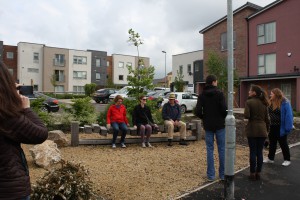
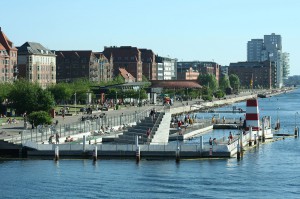
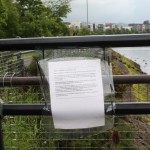

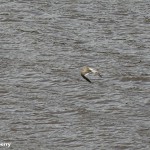
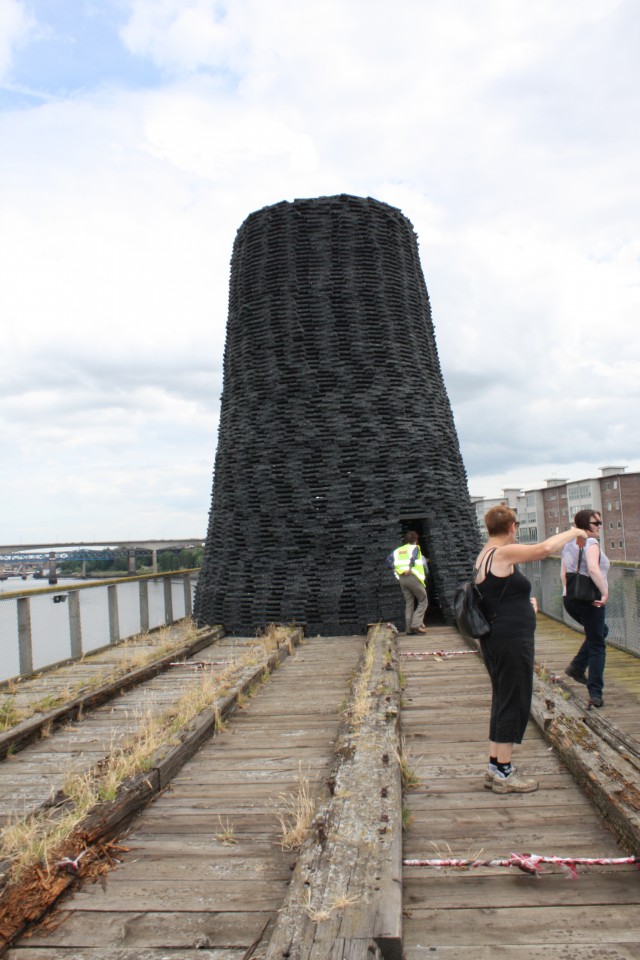
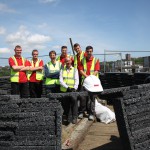
Pingback: Art, Sustainability and Heritage: A Walking Tour with Power and the Water | The power and the Water - project site